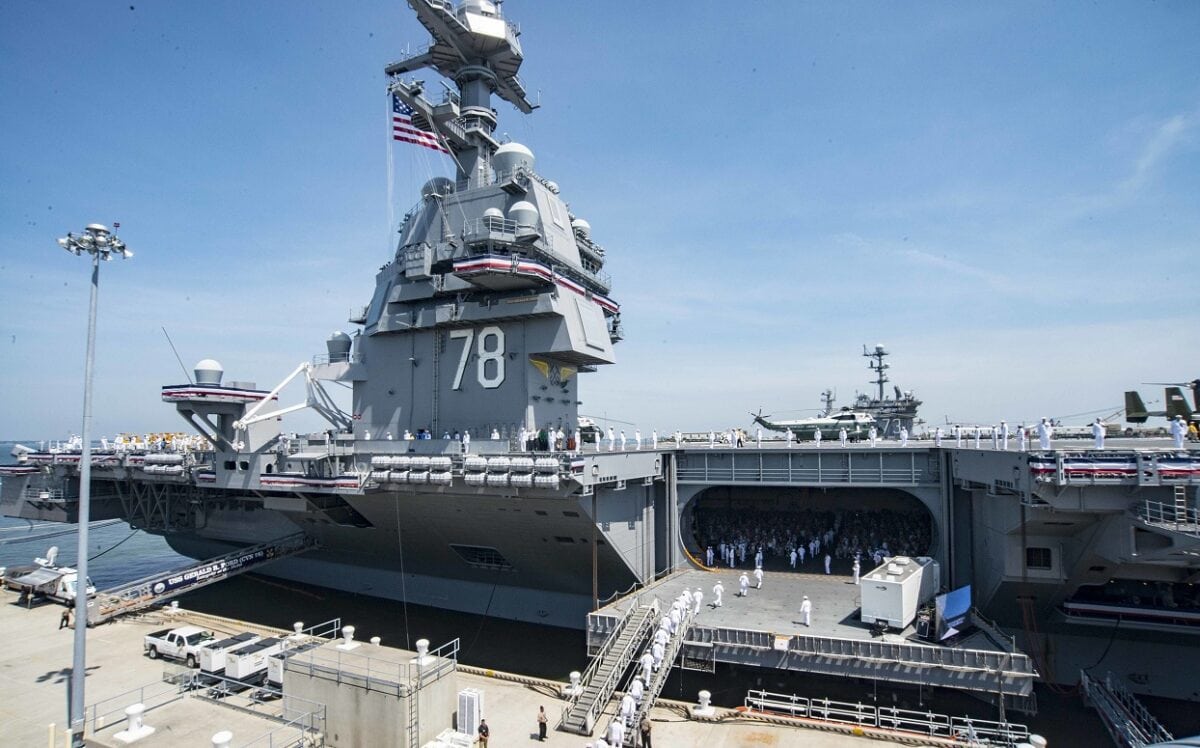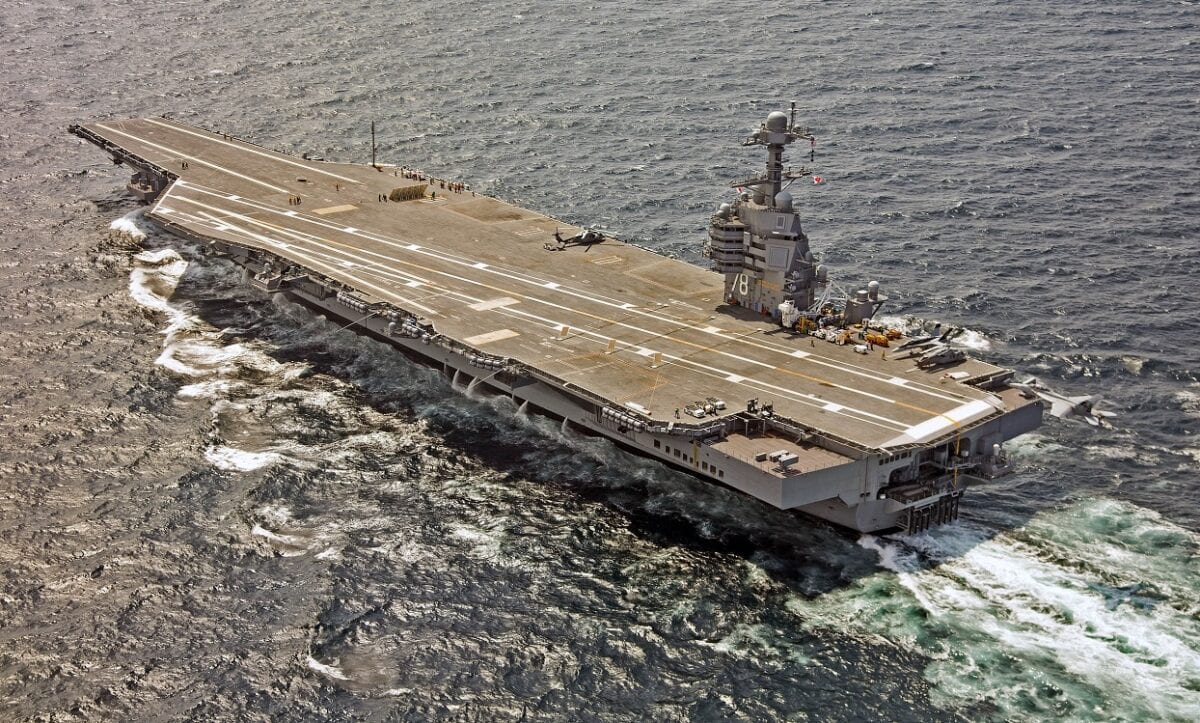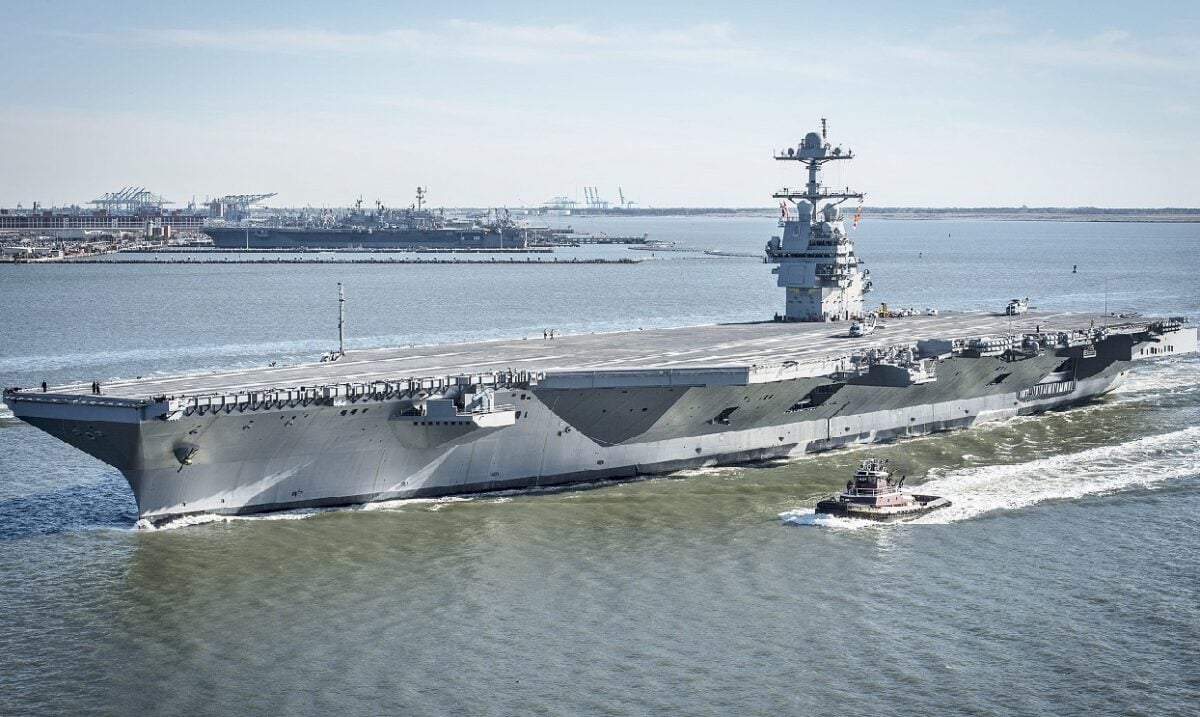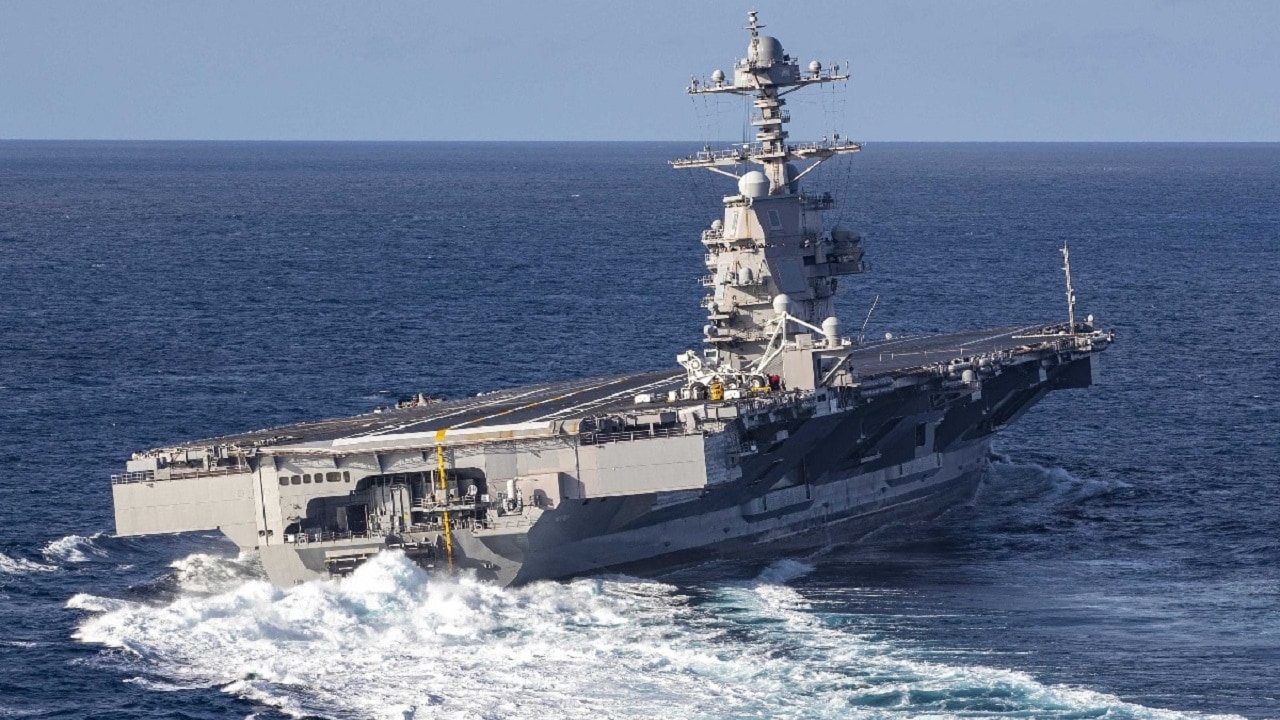U.S. Navy’s USS Gerald R. Ford Closer to First Deployment: The USS Gerald R. Ford aircraft carrier–the largest aircraft carrier to ever serve in the U.S. Navy–is closer to its first deployment. The ship conducted repairs after aftershock trials and completed final modernization work and sea trials earlier in March. The Ford has endured numerous delays and cost-overruns during its acquisition process. It was commissioned in 2017 and the navy has spent $13.3 billion on the flat-top – 30 percent more than what the service branch originally allotted for construction. Now the carrier is getting final checks and maintenance before it can complete its first cruise.
Graduate from Combat Simulation
The Ford had to first pass “shock trials” that it embarked on to prove it could take a blast that simulates combat. Last summer the navy exploded three 40,000 pound charges off the coast of Florida around the carrier to determine if it could survive without harm. The test involved whether the crew could fix minor damages on board or whether the ship needed major repair while docked.
USS Gerald R. Ford Passes the Test
Captain Paul Lanzilotta, Ford’s commanding officer, said after the final trial that there were no failures, fires, or flooding. This shows the Ford could withstand simulated combat and maintain operations.
The navy also said that the Ford only needed minor fixes after the testing – just 20-percent of the repair work compared to the last carrier that last went through shock trials in 1987 – the USS Theodore Roosevelt. Of the repairs that were needed on the Ford, 85-percent were done by sailors on the ship.
“That’s an impressive testament to the design of the ship and the resiliency of her crew,” said Rear Admiral James P. Downey, the Navy’s acquisition lead for aircraft carriers.
Final Maintenance Requirements
Over the last several months Ford also went through a period called planned incremental availability (PIA) for 180-days. This is a time of “modernization, maintenance, and repairs,” according to Jane’s.
The PIA is the last testing block before deployment. Data collected and lessons learned from Gerald R. Ford’s PIA will help the eventual sea trials and acquisition of other carriers in the Ford-class: the USS John F Kennedy (CVN 79), USS Enterprise (CVN 80), and USS Doris Miller (CVN 81).
New Technology Integrations Took Time
The Ford-class has executed new technologies that have slowed the procurement process, but the navy believes these improvements will reduce overall maintenance costs in the long run. The Gerald R. Ford has eleven Advanced Weapons Elevators that run on electromagnetic motors “as opposed to more labor intensive, hydraulic systems, which enables fewer sailors to move ordnance safely from weapons magazines to the flight deck with unparalleled speed and agility,” according to a navy news release.
Other innovations such as the new arresting and launch systems, could result in the carrier conducting aircraft sorties up to 30-percent faster than older flat-tops.

Image: Creative Commons.

Image: Creative Commons.

170408-N-WZ792-198 .NEWPORT NEWS, Va. (April 8, 2017) The future USS Gerald R. Ford (CVN 78) underway on its own power for the first time. The first-of-class ship — the first new U.S. aircraft carrier design in 40 years — will spend several days conducting builder’s sea trials, a comprehensive test of many of the ship’s key systems and technologies. (U.S. Navy photo by Mass Communication Specialist 2nd Class Ridge Leoni/Released)
Expensive Delays Hobbled the Acquisition Program
These upgrades came with high costs and schedule slips – around five years in delays for the new carrier. For example, just testing and evaluation of the electromagnetic catapult system cost one billion dollars, while the build-out and integration of the catapult on the ship was $670 million.
The saga of the USS Gerald R. Ford has been something of a cautionary tale for the building of a carrier with new technologies. But the Ford is a test bed in certain respects and the navy has learned lessons that it can apply to the other carriers of the class. This extra effort and time is necessary to work out the kinks before the first deployment that will happen later this year.
Now serving as 1945’s Defense and National Security Editor, Brent M. Eastwood, PhD, is the author of Humans, Machines, and Data: Future Trends in Warfare. He is an Emerging Threats expert and former U.S. Army Infantry officer. You can follow him on Twitter @BMEastwood.

